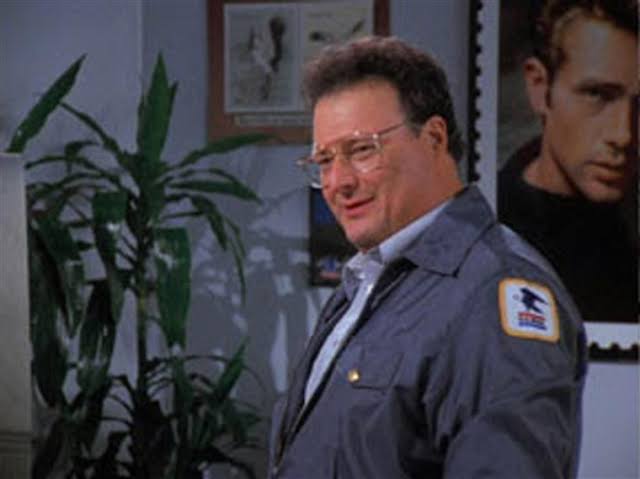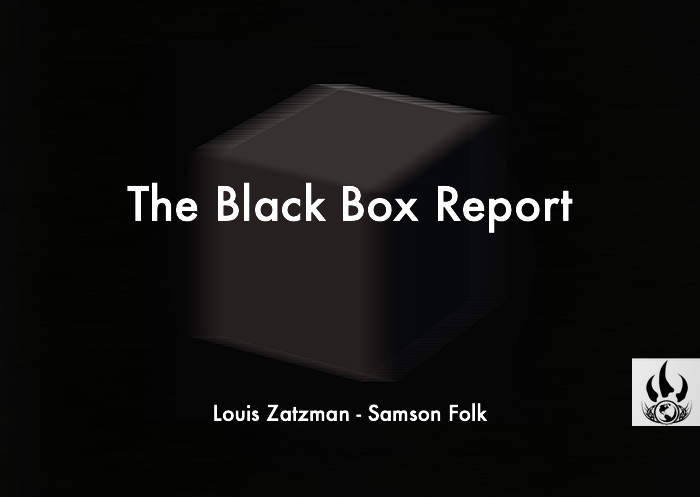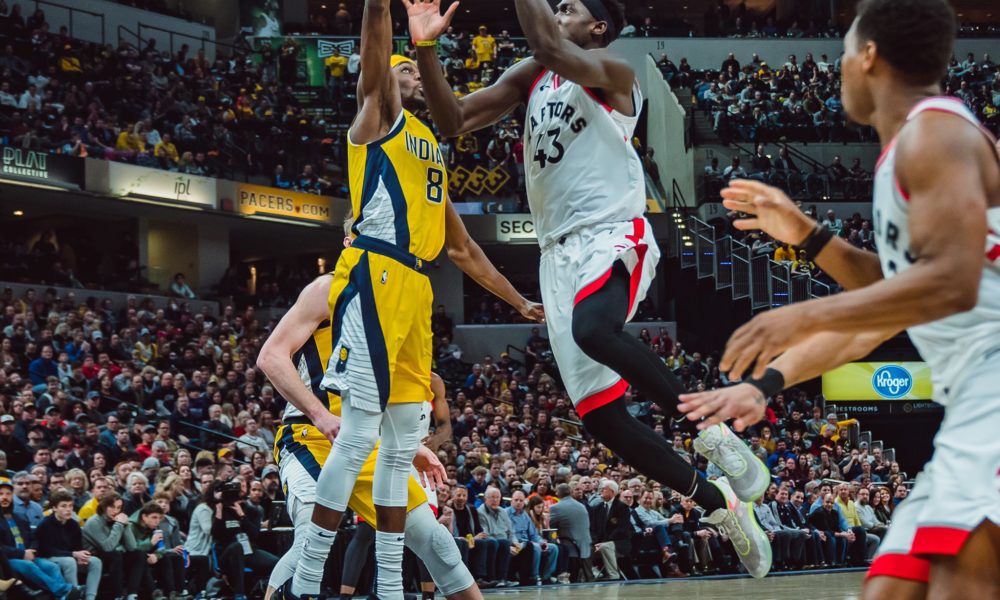The RR Mailbag has undergone some changes over the past years. There’ve been a variety of ownership changes, from the stewardship of Blake to Zarar to Samson to now the BBR (Samson and Louis). If that’s too much change for you, have no fear; the mailbag itself hasn’t changed at all. We’re still here to answer your most pressing questions. If you have more questions that you don’t think this mailbag answered, feel free to ask us on twitter using the hashtag #RRMailbag, or you can ask in the comment section here. We’ll be doing this again, have no fear.
With that, let’s get it.
—
 Louis: First, I think 538 has some unbelievable writers. Chris Herring, in particular, is one of the absolute best in the biz. His ability to write deep dives on crazy, quirky details is unmatched. How often Nurk gets hit in the face? How often Durant loses his shoe? Where do you think of those things?
Louis: First, I think 538 has some unbelievable writers. Chris Herring, in particular, is one of the absolute best in the biz. His ability to write deep dives on crazy, quirky details is unmatched. How often Nurk gets hit in the face? How often Durant loses his shoe? Where do you think of those things?
Beyond that, I use their specific analytics tools with a few grains of salt. No one analytics tool is more useful than just watching the game, though they certainly have their uses. Jacob Goldstein’s PIPM is probably the single best analytical metric, although from what I’ve seen, RAPTOR has plenty of value. It does seem better than CARMELO. However, there are certainly plenty of limitations. Those metrics can’t dive under the hood and evaluate some specific strengths and weaknesses of players in systems, or coaches against certain schemes. For example, it was fairly clear that Fred VanVleet and Norman Powell would struggle last year against the length of the Philadelphia 76ers (that is far less true this year, of course.) How can a metric know that? The Raptors were vast favourites, but that series was much closer than the advanced data seemed to expect.
All that being said, there is value to single-number metrics. The conclusions they draw, like, as you say, the Sixers remaining a championship contender this year despite struggling, are valuable conclusions. They aren’t necessarily correct, but they are worth discussing. RAPTOR, I’m sure, loves Al Horford’s playoff experience, and Philadelphia’s high-end talent. They also are a ferocious defensive team. Those things really matter, and maybe Philly goes into the playoffs with a low-ish seed, but high-end talent and defensive ability will matter in playoff series to a large extent. Perhaps, against the right opponent, they will matter enough to offset cohesion and fit issues. So RAPTOR has valuable contributions to discourse, even if it shouldn’t be used in isolation.

Louis: For those who are unaware, I have a feral cat situation. Samson actually addressed it here. For those of you who aren’t devout listeners to Samson’s pod (you all should be), the problem was this: I recently moved, and my new home has a feral cat in the neighborhood. She seems wonderful, but I am allergic to cats. No problem so far; she goes her way, and I go mine. But my wife loves cats, of all varieties, feral or otherwise, and I’m concerned that she is going to invite the thing into our house. Samson’s solution was basically an extensive Hansel and Gretel situation that saw me slowly lure the cat elsewhere using food.
Well, winter seemed to solve my situation. I haven’t seen the cat for a long time, and I wasn’t forced to leave a trail of breadcrumbs. Laziness prevailed, as it so often does.
 Samson: Without question, I think that Masai Ujiri deserves a ton of credit for how the Raptors have drafted. He came into the league as a scout, and made his mark in the league that way before he became known for fleecing teams in trades. And he clearly has a great nose for prospects (remember when he was trying like hell to trade up and pick Giannis?). It’s also tough because titles are kind’ve fluid in basketball front offices, there’s a lot of different titles that could tie into a lot of different things. The Raptors seem to be working very much as a team in this scenario, though.
Samson: Without question, I think that Masai Ujiri deserves a ton of credit for how the Raptors have drafted. He came into the league as a scout, and made his mark in the league that way before he became known for fleecing teams in trades. And he clearly has a great nose for prospects (remember when he was trying like hell to trade up and pick Giannis?). It’s also tough because titles are kind’ve fluid in basketball front offices, there’s a lot of different titles that could tie into a lot of different things. The Raptors seem to be working very much as a team in this scenario, though.
Their scouts are: Mike Akuboh, Kevin Gamble, Abel Nson, and Patrick Engelbrecht is the Director of Global Scouting and International Affairs. You’d be hard pressed to find any type of comment from the front office in regards to how each of them factor into picking a certain prospect. They certainly all do their fair share of leg work with regards to travel and film breakdown etc. but the Raptors portray their scouting as a cohesive unit and outside of securing an interview with a braggadocios ex-scout or something, I don’t think the organization would have that type of information slip. 
Louis: There’s a few pieces to this question, but I’ll start with the extensive work I’ve already done on the topic. Here’s an extensive piece I wrote on November 20 about VanVleet’s offseason market. Basically everything I wrote then still remains true now:
“Yes, VanVleet is still a relatively low-level finisher. He has never shot better than 42 percent on drives in his career. Length bothers him quite a bit. If he didn’t have those flaws on the offensive end, he would be a max player, and we would be talking about VanVleet in the same breath as prime Deron Williams. Everyone in the NBA save a handful of guys have weaknesses, and VanVleet is no exception. He obviously has room to grow, but it’s encouraging when you look at how much he’s already developed. He’s 25 years old and has yet to reach his prime.”
I suggested a Malcolm Brogdon deal may make sense for VanVleet, which is $85 million over four years. That still makes sense. Toronto could offer that, keep control over OG Anunoby with his cap hold, and still keep the ~$37.5 million necessary for a max slot in 2021-22. The team would have to deal Norman Powell elsewhere, and it could be impossible to extend Terence Davis, Pat McCaw, or any of the youngest members of the team. That hurts. But that’s reality; this is an excellent team, and not everyone can be paid what he deserves while the Raptors still keep space for Giannis. So I think Toronto should offer VanVleet approximately $21 million per year, and I think that’s fair value.
Other teams could still top that. Teams without long-term answers at the point guard position like Detroit, New York, and even Phoenix could and should throw some money at him. VanVleet would also work alongside some point guards, like Trae Young in Atlanta. It just takes one team to believe VanVleet is worth a max deal, and I imagine that somebody gets that idea. If I had to guess, and I say this without sources of any kind, I think someone offers VanVleet more money than Toronto.
 Samson: This is a great point to bring up. Not only has Ibaka carved out a career as an incredibly nice career statistically, but he’s contributed in the margins and carefully crafted himself into a champion who’s been malleable for this Raptors squad. His proximity to the aforementioned great players has no doubt rubbed off on him. Having seen so many extremely talented players fall to the wayside in the NBA (because of bad situations) it’s clear how important mentors and organizations are.
Samson: This is a great point to bring up. Not only has Ibaka carved out a career as an incredibly nice career statistically, but he’s contributed in the margins and carefully crafted himself into a champion who’s been malleable for this Raptors squad. His proximity to the aforementioned great players has no doubt rubbed off on him. Having seen so many extremely talented players fall to the wayside in the NBA (because of bad situations) it’s clear how important mentors and organizations are.
Lesser players have been coveted as mentors for far longer in the league. Teams will always measure the on-court production above the locker room help. It’s the reason we just saw the curmudgeonly Marcus Morris go to the Clippers. Luckily, for the Raptors they don’t have to choose one or the other with Ibaka. His on-court contributions are larger than life, and he’s clearly having a profound impact off the court as well. “Is there a better mentor league wide” is a really difficult question to answer, I think. Very rarely do we have a player like Terence Davis II talking about doing meal prep, workouts etc. and going into detail about what the mentorship is like. Usually blanket statements and platitudes are handed out to media members. However (comma) with Serge’s unique blend of experience, charisma, and skill – sure, let’s label him as a top-5 mentor in the league.

Samson: The easiest and simplest answer is that the Raptors have had unbelievably bad injury luck, and that’s necessitated heavy minutes from Lowry for the Raptors to be successful while other players were out of the lineup. But, the way the Raptors structured their roster and starting-5 is nearly as big a culprit. The Raptors clearly identified the wing as a weak spot this offseason, and tried to shore up that position with players like Patrick McCaw, Stanley Johnson, Matt Thomas and Malcolm Miller. They clearly really liked what they had with Lowry and VanVleet and wanted to try and hit a homerun elsewhere. Also, they were encouraged with McCaw’s steps taken as a primary ball-handler and thought that he could play backup point in a pinch.
So, the Raptors didn’t look for backup point-guard minutes on the market and put VanVleet in the starting lineup which bucked conventional wisdom and made the division of point guard minutes on the roster a little bit more complicated. Mix with that the fact that Terence Davis II plays his best minutes next to another point guard, and that Nurse doesn’t fully trust him as a primary action initiator. The Raptors kept finding themselves relying on VanVleet and Lowry to open games, finish games, and almost always be present on the floor. It’s a strange roster imbalance, and one that Nurse has been pretty comfortable to try and navigate, but unfortunately a lot of that navigation has come at the expense of Lowry’s rest (and maybe health).
Pascal Siakam is definitely the future of this Raptors team, but Lowry can still profile as the teams most important player for very long stretches. Nurse hasn’t been willing to leave him off the floor and lose minutes as a result.

Louis: Oh man, being there for that whole Finals run was one of the most incredible experiences of my life. I think what surprised me the most was the game in which Durant was injured. Both teams seemed to stop caring about the game first and foremost, and then Bob Myers openly wept when discussing the injury with media. It was surreal and strange, especially sitting with people like Zach Lowe and Ramona Shelburne and Blake Murphy, experiencing it together.
My most memorable moment was Toronto’s series-clinching game six against the Bucks. The entire place felt like a zoo, and I’ve never had such adrenaline coursing through my blood purely by virtue of the strangers sitting around me. I mean, I was sitting still, watching, typing, and my heartbeat was a horse’s gallop. The crowd stood for something like 20 consecutive minutes, roaring, screaming, festive and bloodthirsty. Kawhi Leonard’s dunk in transition over Giannis was the exclamation mark, the single moment that will stand to represent the whole in my memory. I will never forget that game.

Louis: Kawhi Leonard.

Louis: I think it’s natural, first of all, to be worried about the future. I have a Master’s in History, and I focused on late-19th Century France. More specifically, the Paris Commune. I was struck studying people how presentist their concerns about the future, their worries about the end of the world, the importance with which they imbued every conflict. That’s true of everyone, everywhere, I think. It’s human to worry about the future.
That’s not really an answer at all, but it is something neat and worth mentioning. To be specific with the Raptors’ fan base, there are a bunch of reasons why people are worried about the future. For one, the Raptors have been burned a lot in the past. From Vince to Bosh to Kawhi, there is a long history of Toronto being spurned for greener pastures. Secondly, until the last seven or so years, the Toronto Raptors were also just one long fart. Man this team sucked. Being so bad for so long gives some hurt to people’s memory, and that hurt matters in instinctive moments. So there are a few specific reasons why this fan base worries about the future, and one major general reason.
More importantly, there are a lot of reasons, perhaps just as convincing, why Toronto should not worry about the future. This team’s present is about as fun and rewarding as any team in sports history. It’s crazy. The good times only last so long — seven years in the bible, right? — but there’s no real reason to think this is the end times for the Toronto Raptors. The Raptors are currently enjoying bounty and plenty, and so too should the fan base enjoy the moment without worrying about the future, if that’s even possible for humans.

Samson: Feels like I get this every single time the podcast or the mailbag takes in questions, and I totally get why. Anunoby is remarkably goofy with his lower extremities sometimes, and it’s why we’ve seen him turn a wide open lane into an offensive foul. Whether it’s his knee jutting out into a defender’s face or his left leg hanging out like a sail on a boat, ready to smack any bystander who’s unlucky enough to be in his vicinity. This happens because he really isn’t in total control of his body.
As you noted, maybe some yoga would help? There’s an extremely stark contrast in watching Pascal Siakam glide to the rim before shaping his body against the help-side defender and extending for a layup, it’s a remarkable feat of body control. You can see similar body control from Kyle Lowry – finishing off of different feet, bouncing defenders and regaining balance, it’s all fantastic. You won’t really see any of that from Anunoby.
The silver lining, though, is the fact that OG is taking more shots at the rim than ever, while maintaining very little drop off in efficiency. That in itself provides an encouraging look at how he might be progressing with his balance and body control. The coordination is important, and once he gets it down he should be far better at navigating his body around the court. Once all that happens maybe we’ll see him start to shoot more free throws, too. Wishful thinking.

Louis: Woah man, so many options to choose from. This summer I drove from Seattle to Portland down Highway 1 to San Francisco. It was a victory parade with my wife after the championship (just kidding, it was our honeymoon. Well, it kind of was a victory parade, I guess, just not for the Raptors.) My favourite meal was probably a combination of meals. One day down the highway we decided to stop in every small town in Southern Oregon and Northern California to sample their chowder. I was (and am) convinced that East Coast chowder is better than the West Coast variety, but that day was unbelievable. I must have had four or five bowls, driving down the Pacific, stopping at beaches, watching the ocean and the sun, and I have never been happier in my life.



